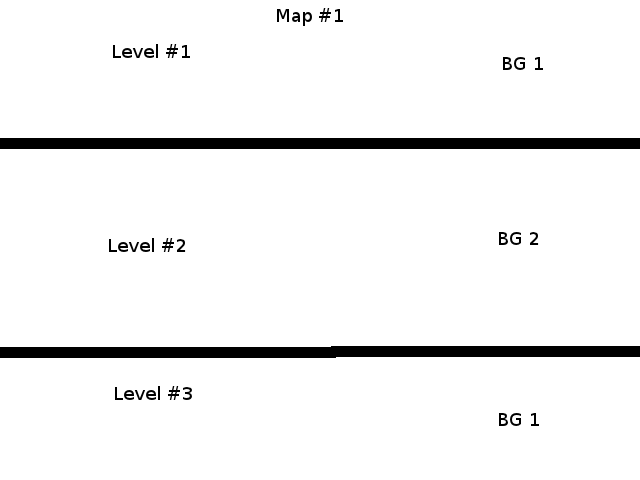Maps? What maps?
What I'm mostly interested in doing for "One Square at a Time", is to make it really easy for the users to create their own maps. This will make sure that the game will never be the same all over.
This is how it works at the moment:

A map consist of lots of levels, in which there are three levels (yep confusing, but I had no idea what to call them): level #1, level #2 and level #3.
So in a quick tree-view, this is how a map would look like:
map
- Level 1
-- Level 1.1
-- Level 1.2
-- Level 1.3
- Level 2
-- Level 2.1
-- Level 2.2
-- Level 2.3
- Level 3
... and so on
The background colors of level x.1 and level x.3 are the same, but the background color of level x.2 is another color. The objects (boxes) on level x.1 and level x.3 are the same color as the background color of level x.2. And, as you might have guessed already, the objects (boxes) on level x.2 are the same color as the background color of level x.1 and level x.3.
Here's my experimental 1.map:
name = Awesome
bg1R = 255
bg1G = 255
bg1B = 255
bg2R = 0
bg2G = 255
bg2B = 255
top = ................................
................................
................................
..........#.#...................
..........###........#..........
............................#...
............................#...
................................
mid = ................................
...............#................
................................
........#.......##..............
........................#.......
........................#.......
........................#.......
................................
bot = ................................
................................
................................
................................
...............#................
...............#................
................................
................................
[level2]
name = Kewl
bg1R = 255
bg1G = 255
bg1B = 255
bg2R = 0
bg2G = 255
bg2B = 255
top = ................................
................................
................................
................................
.....................#..........
............................#...
............................#...
............................#...
mid = ................................
................................
................................
........#.......................
................................
................................
................................
...........
As you see on the level arrays, objects (boxes) are marked by a # sign. This makes it really easy and quick to create levels.
Other news...
I've received my NVidia GTX 460 today and it works perfectly on my ArchLinux desktop PC. Everything was just plug-n-play.
I'd love to say that because of my upgrade from GT 8800 to GTX 460 you can expect a lot more 3D effects and other graphic intensive usage in this game, but no. This'll stick with plain 2D and SDL so far.
